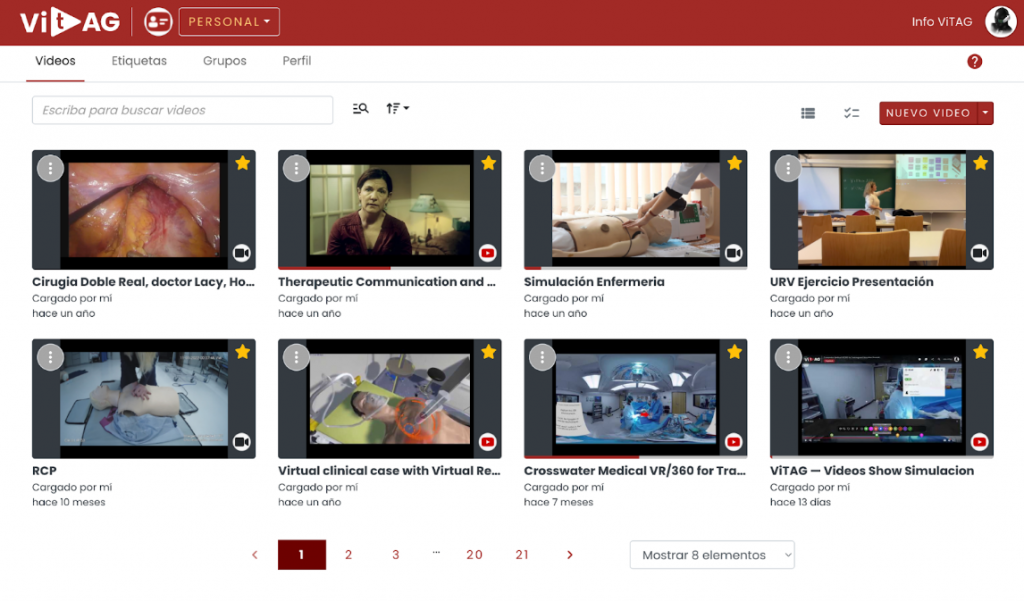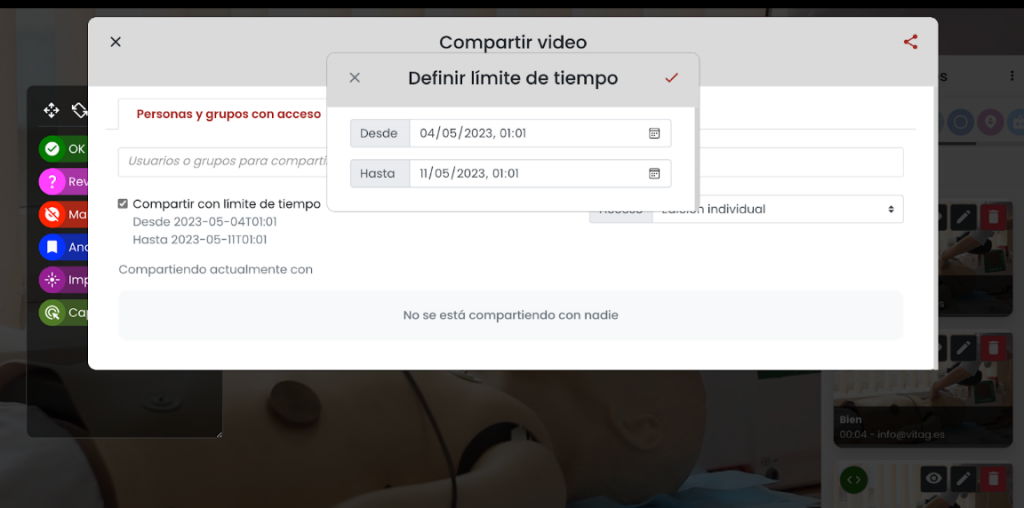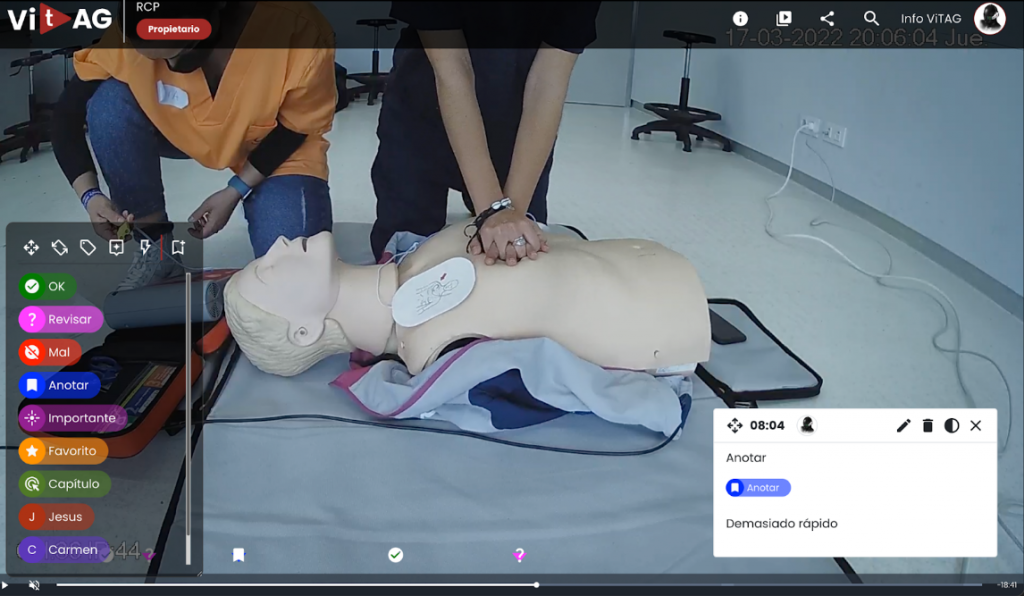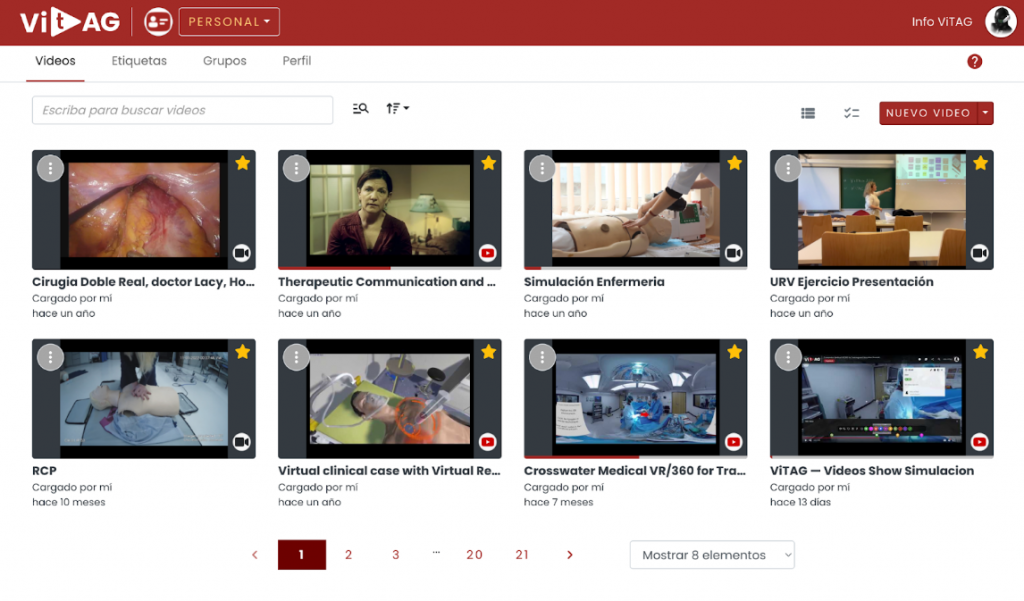Developing skills: how to maintain, modify and/or eliminate actions in work dynamics
When participants or students finish a clinical simulation, they leave with a set of sensations and perceptions that do not always coincide with those of the observers and/or evaluators. How many times have we taken for granted that we have performed actions that in reality we have forgotten to do or we have done them in a way that we did not expect without being aware of it.
In situations like this, visualizing yourself on video after executing any type of role play allows you to analyze everything you did at the time of making decisions according to the context in which you were, and it is then when you recognize correct, improvable and/or absent actions.
Nevertheless, we do not always have the capacity to detect what is well executed that we should maintain, the poorly executed that we should change or stop doing, even the unrealized that we should make an effort to incorporate, and for this the figure of the evaluator or instructor is the one who guides us when we are not able to notice improvements and who leads us to redirect those skills to develop according to our performance in the simulation.
To achieve all this, video is the key tool and its management is a very important aspect present in all scenarios. Based on these premises ViTAG.APP was born, an online platform for cataloging, human interpretation, labeling and sharing of videos and data in a safe and easy way, which some simulation centers in Spain have already started to bet on.

Any video can be managed through the platform so that it can be shared,securely and in compliance with current regulations, with the desired users: only the user who is the subject of the recording, user + instructor, instructor only, complete group of the session… all according to the specific need and objective to be pursued.
Once the users have access to the content, it can be configured as read-only, shared or individual evaluation. The evaluation consists of tagging on the timeline of the video, following a previously configured evaluation rubric/items.

All this allows endless possibilities:sharing simulation videos with participants and/or evaluators; classifying them and having them as a repository for future reference; sharing them untagged by the instructor for a self-evaluation of the participant so that he can perform a more enriching debriefing after seeing himself; sharing them untagged by the instructor but with the possibility for the student to tag himself so that the instructor can evaluate and detect how the participant sees himself and what he detects about his performance (interesting for remote or asynchronous debriefings); sharing them tagged so that the participant can visualize the instructor’s annotations and evaluations as a correction; sharing them with a group of participants so that they can jointly analyze and tag (or not) the same video; sharing videos with researchers, without identifying the recording subjects, in order to obtain and analyze the data under study; allowing participants to upload their own videos to share them and have them evaluated by themselves, among peers or by the instructor… and an endless number of formulas whose limit lies in the imagination of each center.
All this…
– Centralizing and organizing videos in a single platform accessible from any device and place, without the need to upload videos to external servers.
– By tagging videos with relevant information (such as title, description, category, date, author, etc.) and with timestamps that indicate key moments or actions performed. The tags make it easy to search and filter the videos according to different parameters.
– Connecting videos with external systems that provide additional data, such as biometric (temperature, blood pressure, blood oxygen level, etc.), telemetric (position, movement, speed, etc.) or artificial intelligence (facial, voice, emotion recognition, etc.) systems. These data are synchronized with the video and displayed on a timeline or on a side panel. This data provides a more complete and accurate view of what is happening in the video, facilitating its interpretation and evaluation.
– Sharing the videos with other users or groups, allowing joint viewing, commenting and rating.

At present, the centers that already use it claim to have improved their debriefing effectiveness, having opened up many possibilities, especially in terms of self-evaluation of the participant/student, which increases the reflective capacity, self-criticism, error detection and interest in improvement.
The system allows a massive linking of videos, so that with a CSV file previously worked, you associate each video to each participant, streamlining the management of the content and permissions of the same. This aspect, according to current users of the platform, has allowed us to optimize video management time exponentially since its incorporation.
A real breakthrough in the field of clinical simulation!
READ ALSO












































